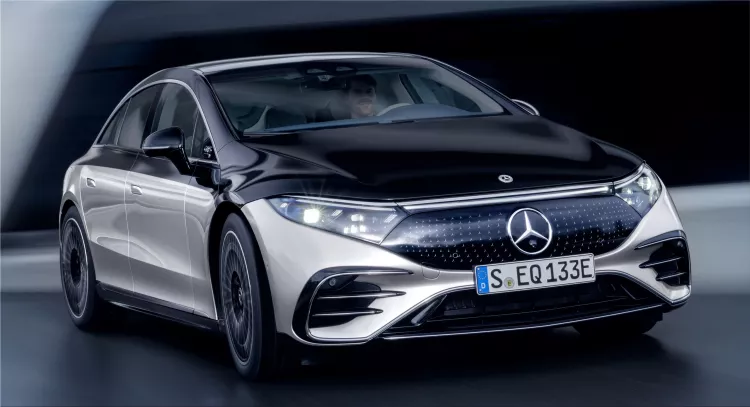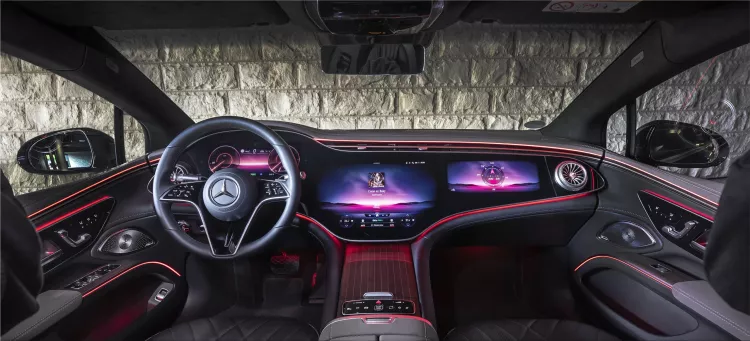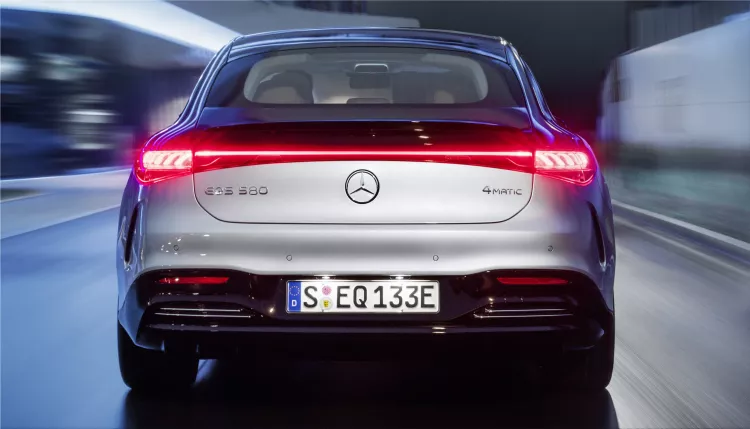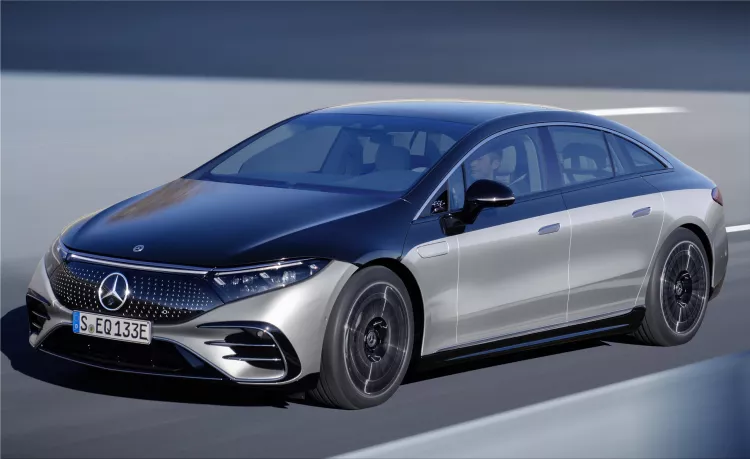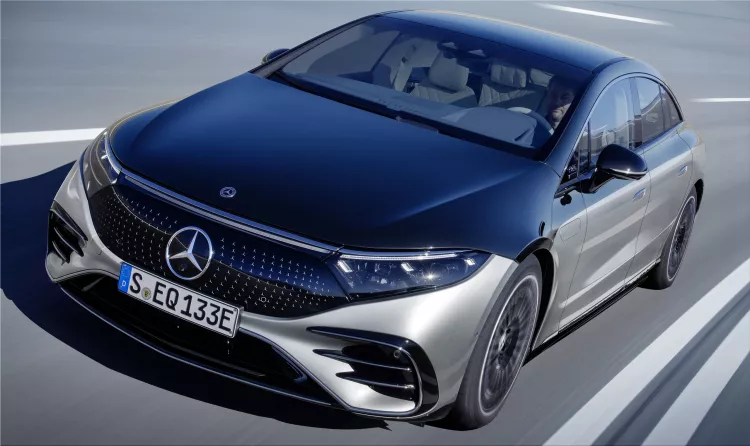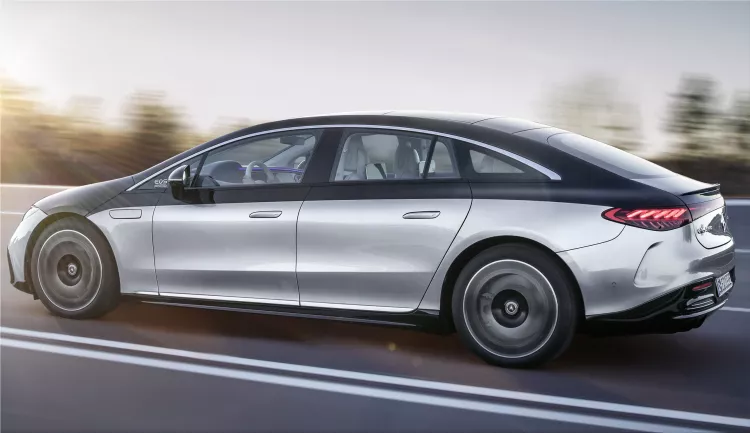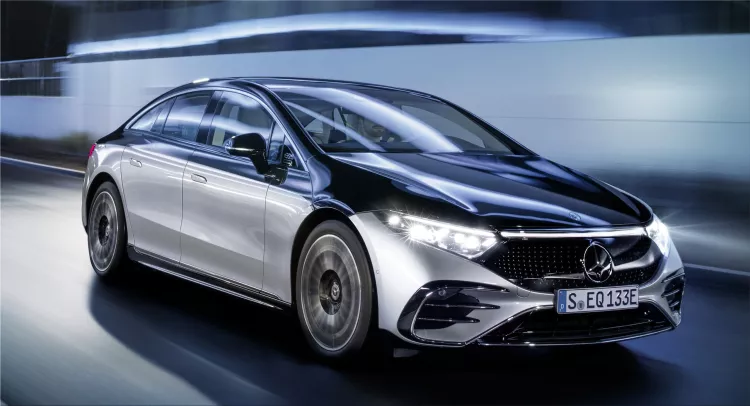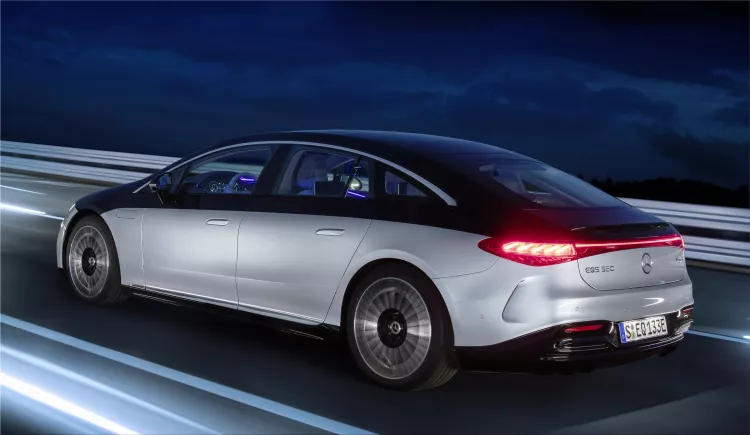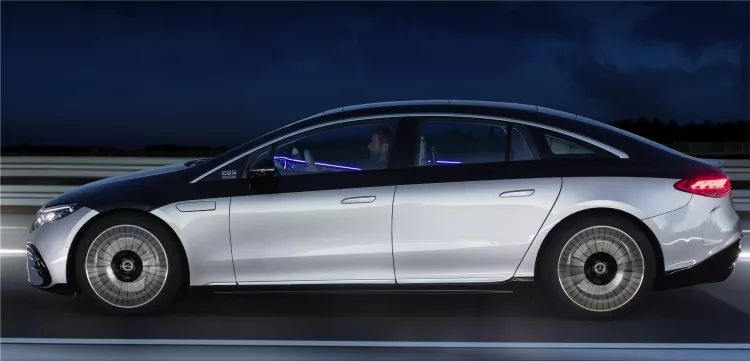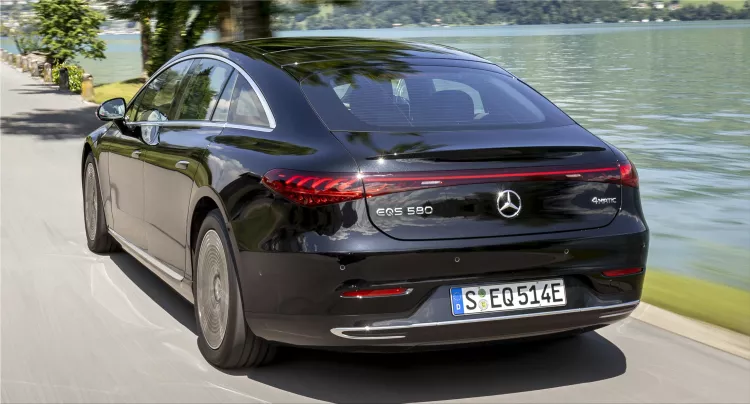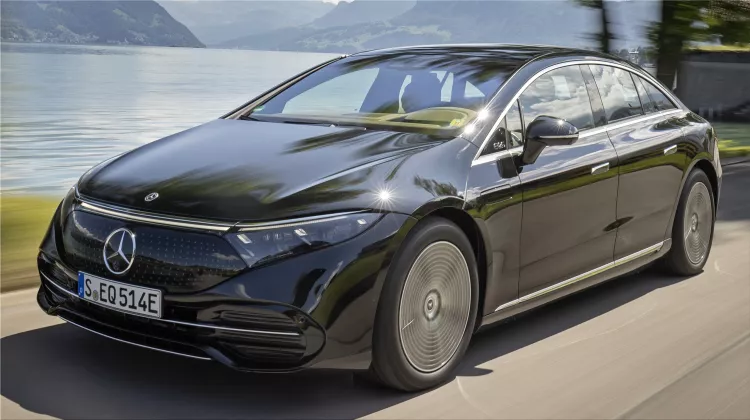The EQS is the first luxury electric car from the Mercedes-EQ brand. The Mercedes-Benz EQS electric car is also the first model based on the modular architecture for luxury and executive-class electric vehicles. The EQS thrills both drivers and passengers by fusing technology, design, functionality, and connectivity.
The Mercedes-Benz EQS 450+ with 245 kW and the Mercedes-Benz EQS 580 4MATIC with 385 kW will be the first models to hit the market.
Within the next 20 years, Mercedes-Benz plans to deliver a carbon-neutral new automobile fleet. By 2030, the business intends more than half of the cars it sells to have electric drive systems, including fully electric and plug-in hybrid vehicles. Mercedes is already planning for tomorrow in many areas, and the new Mercedes-Benz EQS is supposed to be similarly sustainable. The electric cars from Mercedes are built in a carbon-neutral manner, and resource-saving elements like recycled yarn carpets are employed. This is because Mercedes-Benz examines the entire value chain, from research and development to its manufacturing.
Despite being a near relative of the new S-Class, the Mercedes-Benz EQS is an all-electric vehicle. As a result, the EQS is immediately distinct from vehicles with combustion engines even at first glance, thanks to its one-bow lines and cab-forward design with a fastback. Sensual Purity meets Progressive Luxury in this design, which features generously carved surfaces, fewer joints, and seamless transitions.
The aerodynamicists obtained a new cd best value of 0.20 based on this design, thanks to close collaboration with the expert designers and a great deal of diligent detail work. As a result, the Mercedes-Benz EQS is the world's most aerodynamic production automobile. This is especially beneficial to the operational range. It's also one of the quietest running options. This is aided substantially by the very low wind noise level.
The EQS presents a very good value for the energy recuperation process: recovery achieves up to 3 m/s2 of the maximum deceleration in the DAuto recuperation program of 5 m/s2 (2 m/s2 by the wheel brakes). This enables deceleration to a stop without using the brake pedal, while the range benefits from the recovery method and the high recovery power (up to 290 kW ). Deceleration is also applied to detected vehicles in front of you until they come to a complete stop, such as at traffic signals. With the help of ECO Assist, intelligent energy recovery is situation-optimized and works with foresight, taking into consideration traffic conditions and geography, among other factors. The electric car driver can also use the paddle shifters on the steering wheel to choose three different levels of energy recovery and the coast function.
The Mercedes-Benz EQS powertrain also meets every expectation of a modern saloon in the S-Class sector. The luxury electric car has a range of up to 770 kilometers (WLTP) and power outputs up to 385 kW. In addition, a performance version with a power output of up to 560 kW is in the works. All Mercedes-Benz EQS vehicles have an electric powertrain (eATS) at the rear axle, with an eATS at the front axle on 4MATIC models.
The Mercedes-Benz EQS is the first of a new battery class with a much better energy density. The largest of the two batteries has 107.8 kWh of useful energy. This is almost 26% higher than the EQC (EQC 400 4MATIC: combined power consumption: 21.5 - 20.1 kWh per 100 km; CO2 emissions: 0 g/km). In addition, the in-house designed battery management software enables upgrades over the air (OTA). As a result, the energy management system stays current throughout its life cycle.
Fast charging stations with direct current can charge the EQS with up to 200 kW. In just 15 minutes, the battery may be recharged for another 300 kilometers (WLTP). In addition, the EQS can be charged with up to 22 kW with AC using the onboard charger at home or at public charging stations. In Japan, bidirectional charging using the EQS, charging in both directions, will be possible. Furthermore, there are a variety of intelligent charging programs that can be engaged automatically based on the location and services, such as battery-saving charging.
The MBUX Hyperscreen is the interior's standout feature. This huge, curved screen unit spans the whole length of the A-pillars virtually. Under a cover glass, three screens appear to merge into one. The front passenger has his own display and control space, thanks to the 12.3-inch OLED display. According to country-specific regulatory regulations, entertainment functions are only available when the automobile is being driven. The Mercedes-EQ uses a camera-based locking logic: if the camera detects that the driver is looking at the front passenger display, it is muted automatically.
The Mercedes-Benz EQS features up to 350 intelligent sensors, depending on the equipment, making it an extremely intelligent vehicle. Distances, speeds, and accelerations are recorded, as well as lighting conditions, precipitation, and temperatures, seat occupancy, and even the driver's blink or passengers' conversation. This vast amount of data is processed by control units, which, guided by algorithms, make decisions at breakneck speed. So, in a sense, they are the brain. In addition, because it is very capable of learning thanks to artificial intelligence, the new EQS can expand its capabilities based on fresh experiences.
Based on a variety of parameters, Navigation with Electric Intelligence plots the quickest and most convenient route, including charging stops and adapts dynamically to traffic jams or changes in driving style, for example. A display in the MBUX system (also present in the Mercedes-Benz EQA 250) shows whether the available battery capacity is adequate to return to the starting location without charging is a new feature of the EQS. In the route computation, charging stations that have been manually added along the route are given priority. Charging stations that have been proposed can be omitted. Calculate the anticipated charging costs per charging stop.
Numerous driver support capabilities are included in the latest generation of driver assistance systems. The added microsleep warning from ATTENTION ASSIST is a new system. It uses a camera on the driver's display to analyze the driver's eyelid movements (only in conjunction with MBUX Hyperscreen). In an understandable full-screen perspective, the assistance display within the driver's display illustrates the working of the driving aid systems.
Parking systems can assist the driver in a variety of situations thanks to advanced sensors that monitor the vehicle's surroundings. The Remote Parking Assist system allows the driver to park and unpark the car using his or her smartphone. The Mercedes-Benz EQS is ready for Automated Valet Parking thanks to the pre-installation of the INTELLIGENT PARK PILOT. The electric vehicle has the technology on board to park and unpark fully automatically.
The Mercedes-Benz EQS will be able to drive in conditionally automated mode at up to 60 km/h in high-traffic areas or in tailbacks on approved motorway sections, with the optional DRIVE PILOT system. Furthermore, because the technology relieves the driver's stress, he or she is able to engage in secondary tasks like browsing the internet or dealing with emails.
Mercedes-Benz has revealed that its flagship electric vehicle, the EQS sedan, will cost at least 100,000 euros and has begun taking orders in Germany. The standard model, which comes with a 90kWh battery pack and a single electric motor driving the rear wheels, has a price starting at 106,000 euros. The more premium dual-motor, the all-wheel-drive model, comes with a 107.8kWh battery pack and has a price starting at 135,000 euros. While the EQS will unavoidably be compared to Tesla's redesigned Model S sedan due to their similar prices and long-range capabilities, Mercedes-Benz's embrace of maximalist luxury contrasts sharply with Tesla's laser concentration on minimalism and technology.
Regardless of the platform, the concepts of Integral Safety, particularly accident safety, apply. The EQS, like any other Mercedes, has a robust passenger cell, specific deformation zones, and cutting-edge restraint systems. The PRE-SAFE system is the industry standard. Because the EQS is built on an all-electric architecture, new design opportunities for its safety concept have opened up. It meant, for example, that a suitable position for the battery installation could be found in a crash-protected part of the vehicle's underbody. In addition, because there isn't a massive engine block onboard, the behavior in a frontal collision may be better predicted. The car's performance in numerous additional load circumstances was validated, and detailed component tests were carried out at the Vehicle Safety Technology Centre in addition to the conventional crash tests (TFS). @via Mercedes-Benz.
Mercedes-Benz is currently working on the first electric car that uses modular electrical architecture (MEA). With Mercedes-Benz EQS, Daimler is planning a flagship that is at the level of an S-Class. Thanks to the coupé body and a new… Continue reading
The future Mercedes-Benz G-Class electric could be called the EQG and it could be launched in 2024, according to unofficial information published on a forum of electric car fans. The information shows that the German manufacturer has… Continue reading
The Mercedes-Benz EQS has carved a niche for itself in the ever-expanding luxury electric vehicle (EV) market. Known for its sleek design, powerful performance, and innovative technology, the EQS has captured the attention of… Continue reading
Hyundai premium brand Genesis has revealed the first pictures of the GV60 electric car. The second full-electric vehicle from the luxurious South Korean brand is based on the new electric car architecture E-GMP (Electric-… Continue reading

